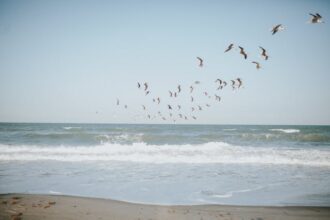Research conducted by psychology researchers from the University of Utah is adding empirical weight to what American authors John Muir and Henry David Thoreau espoused over a century ago: Spending time in natural surroundings not only nourishes the heart and soul but also benefits cognitive function. Amy McDonnell and David Strayer are at the forefront of this research, which utilises electroencephalography (EEG) to measure participants’ attentional capacity in natural versus urban settings.
Published in Scientific Reports, their study conducted at the university’s Red Butte Garden reveals that a walk in nature enhances executive control processes in the brain beyond the benefits typically associated with exercise alone. This finding contributes significantly to the growing scientific literature on how natural environments positively impact physical and mental health. Reflecting this increasing interest, the University of Utah has established the Nature and Human Health Utah research group to explore these themes further and propose practical solutions.
The researchers suggest that humans have a deep-seated affinity for nature rooted in our evolutionary history—a concept known as biophilia. This innate connection is increasingly threatened by dense urban environments characterised by constant technological stimuli such as cell phones, cars, and computers. According to Strayer, the modern urban jungle contrasts sharply with the therapeutic qualities of natural settings, highlighting a critical need to preserve access to nature for public health.
Strayer, a psychology professor known for his previous work on multitasking and distracted driving, has spent the last decade investigating how nature influences cognitive processes. McDonnell, who conducted the latest research as part of her doctoral dissertation, continues this line of inquiry as a postdoctoral fellow at the University of Utah. Their study, conducted in 2022 at Red Butte Garden, involved 92 participants who underwent EEG recordings before and after a 40-minute walk.
Participants first engaged in a mentally taxing cognitive task—counting backwards from 1,000 by sevens—to deplete their attentional reserves. They were then assigned either a nature walk through Red Butte or an urban walk through the university’s medical campus. The EEG data showed that those who walked in nature exhibited improved executive attention on subsequent tasks compared to those who walked in an urban environment. This improvement in executive control, essential for tasks requiring concentration and problem-solving, underscores the unique cognitive benefits of natural settings.
What distinguishes this study from much of the existing research in the field is its rigorous methodology, particularly its reliance on objective EEG data rather than subjective self-reports. EEG allowed the researchers to precisely map brain activity associated with attentional processes, revealing distinct enhancements in executive control among nature walkers.
McDonnell explained the technical aspects of their approach, detailing how each participant wore a cap fitted with electrodes to capture brain activity. This setup facilitated recording subtle electrical signals across the scalp, providing detailed brain maps highlighting the specific neural mechanisms influenced by environmental exposure.
While the study found significant benefits for executive control, particularly in the prefrontal cortex—an area critical for decision-making and problem-solving—it noted less pronounced effects on alertness and orientation. This specificity suggests that different components of attention may respond differently to environmental stimuli, an area ripe for further investigation.
Looking ahead, McDonnell and Strayer aim to refine their findings to identify which natural settings optimally enhance cognitive function and determine the necessary duration of exposure for maximal benefits. Their ultimate goal is to inform urban planning and design practices that promote mental and physical well-being by incorporating elements of natural environments.
Strayer emphasised the broader implications of their research, highlighting how understanding the cognitive benefits of nature could lead to innovative urban interventions. By integrating nature-inspired elements into urban landscapes, cities could support and enhance public health outcomes, counterbalancing the cognitive stresses imposed by modern urban living.
Continuing their work at Red Butte Garden, the researchers are investigating how cellphone use during walks may influence cognitive responses. Strayer views this ongoing research as complementary to his broader interest in distraction and attention, framing them as interconnected facets of mental functioning. He posits that while urban environments may overload cognitive resources, natural environments offer a refreshing reprieve, allowing the brain to reset and operate more efficiently.
McDonnell and Strayer’s research underscores the profound cognitive benefits of spending time in natural environments, supported by robust EEG evidence. Their findings not only validate the intuitive appeal of nature but also provide scientific insights that could reshape urban planning paradigms, fostering healthier and more resilient communities in an increasingly urbanised world.
More information: Amy S. McDonnell et al, Immersion in nature enhances neural indices of executive attention, Scientific Reports. DOI: 10.1038/s41598-024-52205-1
Journal information: Scientific Reports Provided by The University of Utah








